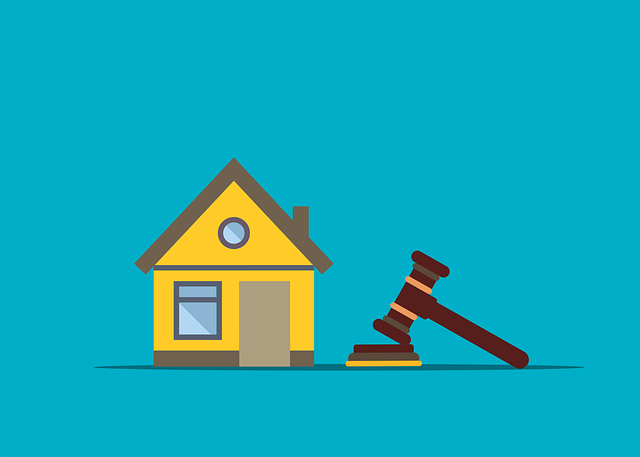L’ipoteca giudiziale nasce da un provvedimento giurisdizionale. Il Codice Civile all’art. 2818 dispone che ogni sentenza che condanna al pagamento di una somma o all’adempimento di altra obbligazione ovvero al risarcimento dei danni da liquidarsi successivamente è titolo per iscrivere ipoteca sui beni del debitore. Lo stesso accade anche con altri provvedimenti giudiziali ai quali la legge attribuisce tale effetto.
È un titolo valido per iscrivere ipoteca anche il lodo degli arbitri quando sia reso esecutivo (art. 2819 Cod. Civ.) ex art. 825 c.p.c. e può iscriversi ipoteca anche in base alle sentenze pronunciate dalle autorità giudiziarie straniere dopo che ne è stata dichiarata l’efficacia dall’autorità giudiziaria italiana, salvo che le convenzioni interazionali dispongano diversamente.
L’ipoteca giudiziale consente di prendere iscrizioni sui beni del debitore, ma non viene iscritta d’ufficio; per iscrivere tale ipoteca occorre sempre la richiesta del creditore.
In breve, per iscrivere un’ipoteca giudiziale il creditore deve rivolgersi al tribunale: sarà la sentenza emessa dal giudice il titolo idoneo a iscrivere ipoteca sui beni del debitore. Grazie all’iscrizione dell’ipoteca, in caso di mancato pagamento del debito, il creditore potrà recuperare la cifra che gli spetta rivalendosi sul bene oggetto di ipoteca.
Nella sentenza del giudice saranno indicati i termini per pagare il debito e le modalità di pagamento dello stesso. Occorre evidenziare, a questo punto, che quando il debitore avrà saldato il suo debito l’ipoteca giudiziale non si cancellerà automaticamente ma la cancellazione dovrà essere richiesta nelle forme qui di seguito indicate.
Per la cancellazione di un’ipoteca giudiziale si può fare riferimento a un notaio o ci si può rivolgere al Tribunale.
Se si decide di avvalersi del ministero del notaio, il creditore soddisfatto deve esprimere davanti al notaio il consenso alla cancellazione di quell’ipoteca in un atto pubblico o in una scrittura privata autenticata. L’atto contenente detto consenso alla cancellazione sarà sottoscritto dal creditore e dal notaio e sarà trasmesso all’Ufficio dell’Agenzia delle Entrate competente per territorio per formalizzare la cancellazione dell’ipoteca giudiziale.
In alternativa ci si può rivolgere al tribunale per ottenere dal giudice un provvedimento col quale si ordina la cancellazione dell’ipoteca; tale provvedimento sarà poi presentato all’Ufficio dell’Agenzia delle Entrate competente per territorio per annotare la cancellazione dell’ipoteca giudiziale.
All’esito del procedimento l’immobile sul quale era stata iscritta ipoteca tornerà ad essere libero dalla formalità.
DISCLAIMER
Gentile utente,
gli articoli e i contenuti del sito illustrano sinteticamente tematiche giuridiche, economiche e fiscali. Le informazioni contenute nel sito hanno solo carattere esemplificativo, informativo e non hanno carattere esaustivo, né possono essere intese come espressione di un parere legale. Nessuna responsabilità derivante da un utilizzo improprio dei contenuti del sito, da eventuali modifiche intervenute nella normativa o da possibili imprecisioni, potrà essere pertanto imputata al Notaio Edoardo Del Monte o agli estensori delle pubblicazioni medesime.
Cancellation of a judicial mortgage
A judicial mortgage arises from a court order. Article 2818 of the Civil Code stipulates that any judgment ordering the payment of a sum of money or the fulfilment of another obligation or the payment of damages to be settled at a later date is grounds for registering a mortgage on the debtor’s assets. The same applies to other judicial measures to which the law attributes this effect.
An arbitration award is also valid grounds for registering a mortgage when it is made enforceable (Article 2819 of the Civil Code) pursuant to Article 825 of the Code of Civil Procedure, and a mortgage may also be registered on the basis of judgments handed down by foreign judicial authorities after they have been declared effective by the Italian judicial authorities, unless international conventions provide otherwise.
A judicial mortgage allows for the registration of the debtor’s assets, but is not registered automatically; the creditor must always request the registration of such a mortgage.
In short, in order to register a judicial mortgage, the creditor must apply to the court: the judgment issued by the judge will be the appropriate title for registering a mortgage on the debtor’s assets. Thanks to the registration of the mortgage, in the event of non-payment of the debt, the creditor will be able to recover the amount owed by claiming the mortgaged asset.
The judge’s ruling will specify the terms for paying the debt and the methods of payment. It should be noted at this point that when the debtor has paid off their debt, the judicial mortgage will not be automatically cancelled, but cancellation must be requested in the manner indicated below.
To cancel a judicial mortgage, you can consult a notary or contact the court.
If you decide to use the services of a notary, the satisfied creditor must express their consent to the cancellation of the mortgage before the notary in a public deed or in an authenticated private document. The deed containing said consent to cancellation will be signed by the creditor and the notary and will be sent to the relevant Revenue Agency office to formalise the cancellation of the judicial mortgage.
Alternatively, you can apply to the court to obtain a court order for the cancellation of the mortgage; this order will then be submitted to the competent local Revenue Agency office to record the cancellation of the judicial mortgage.
At the end of the procedure, the property on which the mortgage was registered will once again be free of formalities.
DISCLAIMER
Dear user,
the articles and contents of the site briefly illustrate legal, economic and fiscal issues. The information contained in the site is for illustrative and informative purposes only and is not exhaustive, nor can it be considered as an expression of legal opinion. No liability arising from improper use of the contents of the site, from any changes in the legislation or from possible inaccuracies, can therefore be attributed to Notary Edoardo Del Monte or to the authors of the publications themselves.


